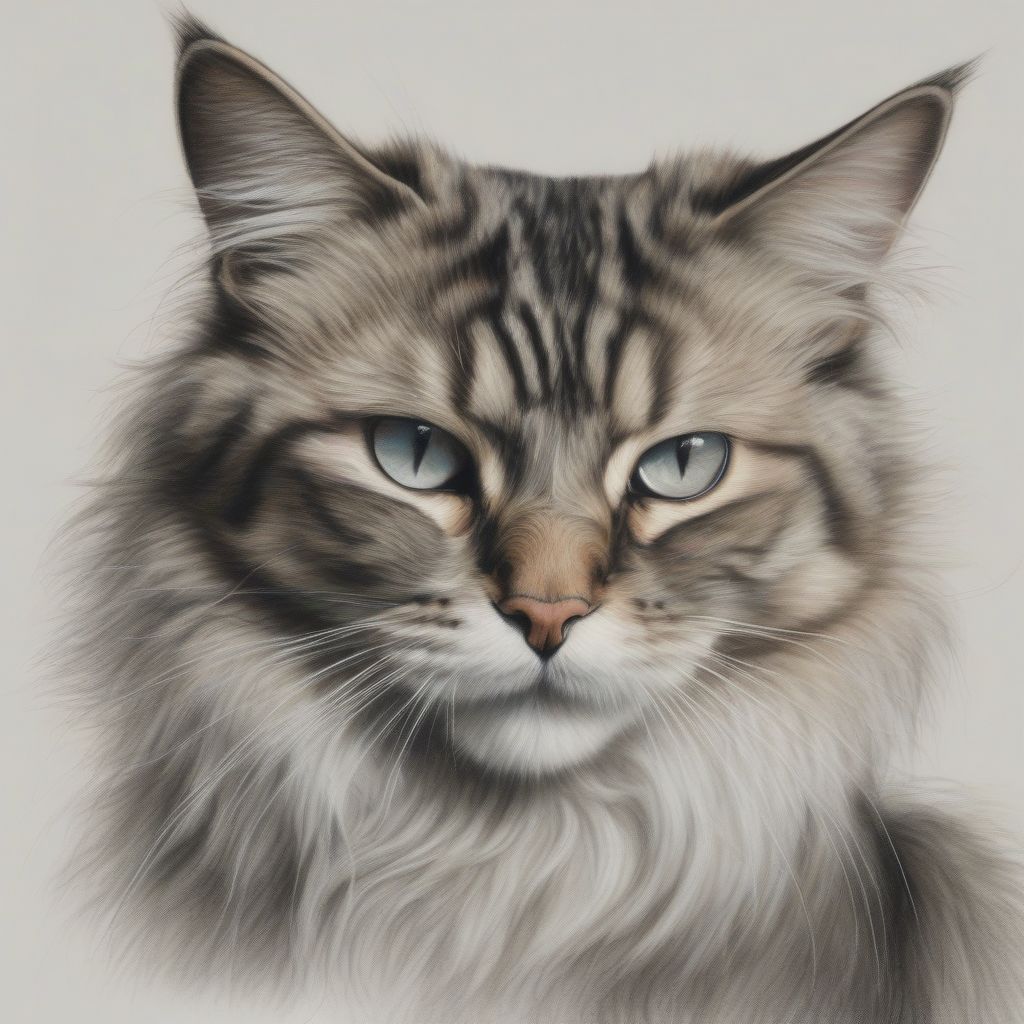Have you ever gazed at your furry friend, a majestic lion on TV, or a playful monkey at the zoo and felt that urge to capture their beauty on paper? Drawing animals can be a delightful way to connect with nature, express your creativity, and even impress your friends. While it might seem intimidating at first, with the right guidance and a sprinkle of patience, anyone can learn how to draw animals – even if you think you can’t draw a straight line!
This comprehensive guide will equip you with all the tools and techniques you need to embark on your animal drawing journey. We’ll explore simple step-by-step tutorials, essential tips, and recommended resources that will have you sketching lifelike creatures in no time. Let’s grab our pencils and unleash our inner artists!
Getting Started: Basic Tools and Techniques
Before we dive into specific animal tutorials, let’s gather the essential tools and familiarize ourselves with some fundamental drawing techniques:
Tools of the Trade:
- Pencils: A set of graphite pencils (2H, HB, 2B, 4B, 6B) will provide a range of values from light to dark, allowing you to create depth and dimension in your drawings.
- Sketchbook: Choose a sketchbook with smooth, acid-free paper that can handle erasing without damaging the surface.
- Eraser: A kneaded eraser is ideal for artists as it can be molded into different shapes to lift graphite without leaving residue.
- Sharpener: A good quality sharpener will ensure your pencils always have a fine point for detailed work.
Mastering the Basics:
- Basic Shapes: Most animals, no matter how complex, can be broken down into basic shapes like circles, squares, triangles, and ovals. Start by sketching these basic shapes lightly to construct the animal’s form.
- Observation: The key to realistic animal drawings lies in careful observation. Pay attention to the animal’s proportions, the way they move, and their unique features.
- Light and Shadow: Understanding how light falls on an object and creates shadows is crucial for adding depth and realism. Practice shading techniques like hatching, cross-hatching, and blending to create a three-dimensional effect.
Step-by-Step Tutorials: From Beginner to Advanced
Now, let’s put those basic skills to the test with some fun and easy step-by-step tutorials:
1. Drawing a Cartoon Dog
- Step 1: Start with a large circle for the dog’s head and a smaller circle overlapping it slightly for the muzzle.
- Step 2: Add two ovals on top of the head for the ears. You can experiment with different ear shapes depending on the breed of dog you’re drawing.
- Step 3: Draw two small circles inside the head for the eyes and a curved line for the mouth.
- Step 4: Add a larger oval below the head for the body and attach four legs using curved lines.
- Step 5: Erase any unnecessary guidelines and add details like a tail, paws, and facial features.
 How to Draw a Cartoon Dog
How to Draw a Cartoon Dog
2. Drawing a Realistic Cat
- Step 1: Draw a circle for the head and lightly sketch a vertical and horizontal line to divide it into quarters. These guidelines will help you place the facial features.
- Step 2: Add two pointed triangles on top of the head for ears and two smaller ovals within the head for the eyes.
- Step 3: Draw a small triangle for the nose, a curved line for the mouth, and some whiskers extending from the cheeks.
- Step 4: Sketch a larger oval for the body, ensuring it overlaps the head slightly. Add two front legs and the beginning of the back legs.
- Step 5: Connect the back legs to the body and add a curved tail. Erase guidelines and add details like fur texture using short, curved strokes.
 How to Draw a Realistic Cat
How to Draw a Realistic Cat
3. Drawing a Majestic Lion
- Step 1: Start with a large circle for the head and a smaller circle overlapping it for the muzzle. Add guidelines to divide the head into quarters.
- Step 2: Sketch the mane using jagged, flowing lines around the head.
- Step 3: Add almond-shaped eyes, a triangular nose, and a slightly open mouth with sharp teeth.
- Step 4: Draw a large, muscular body with strong legs and a long, flowing tail ending in a tuft of fur.
- Step 5: Use shading techniques to create volume and dimension in the lion’s mane, muscles, and fur.
 How to Draw a Majestic Lion
How to Draw a Majestic Lion
Tips for Improvement and Inspiration
- Practice Regularly: The more you practice, the better you’ll become. Set aside some time each day or week to dedicate to your drawing.
- Don’t Be Afraid to Make Mistakes: Mistakes are an essential part of the learning process. Embrace them and see them as opportunities for growth.
- Study from the Masters: Analyze animal drawings and paintings by renowned artists. Pay attention to their use of line, form, and composition.
- Seek Feedback: Share your work with friends, family, or online communities to get constructive criticism and encouragement.
Conclusion: Embrace the Joy of Drawing Animals
Learning how to draw animals is a rewarding journey of creativity, observation, and self-expression. With patience, practice, and the right guidance, you can bring your animal drawings to life with detail and personality. Remember, there’s no right or wrong way to draw. Embrace your unique style, experiment with different techniques, and most importantly, have fun!
So, grab your pencils, unleash your imagination, and embark on an exciting adventure into the world of animal drawing. You might be surprised at the incredible creatures you’ll create!
[amazon bestseller=”drawing-animals”]
